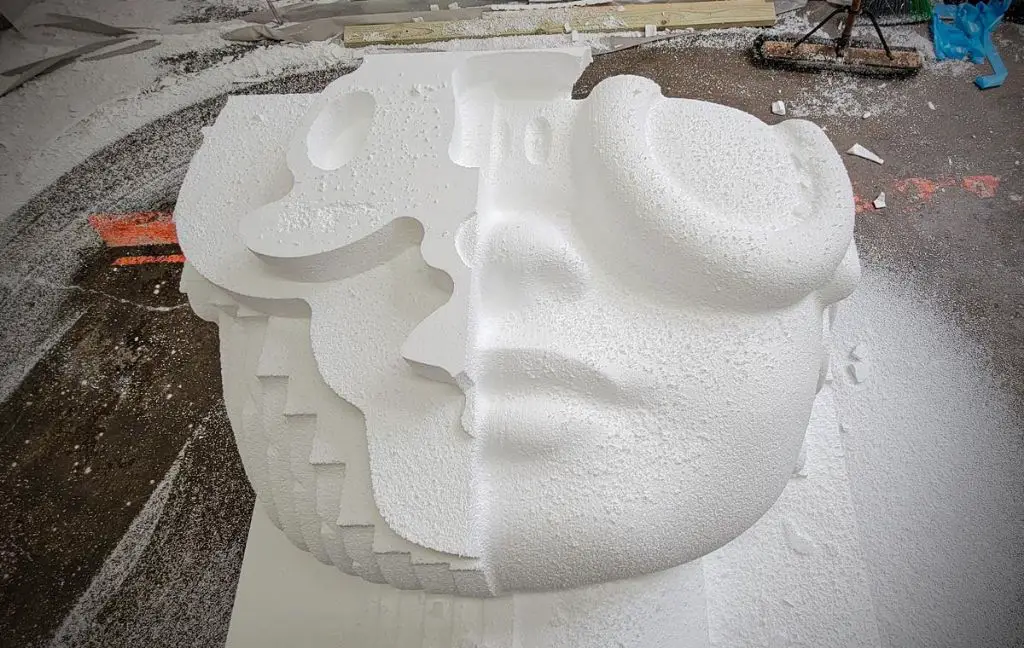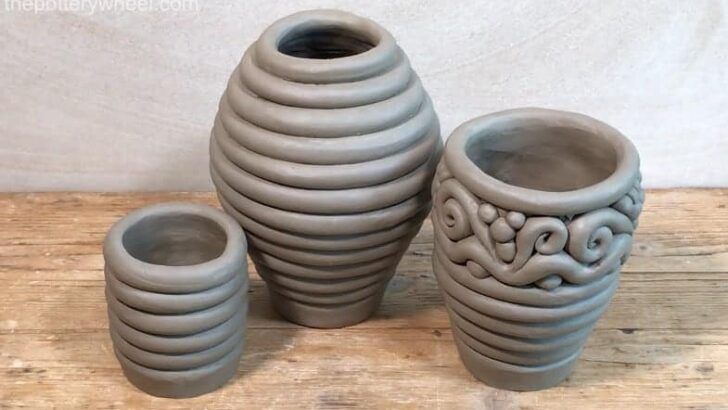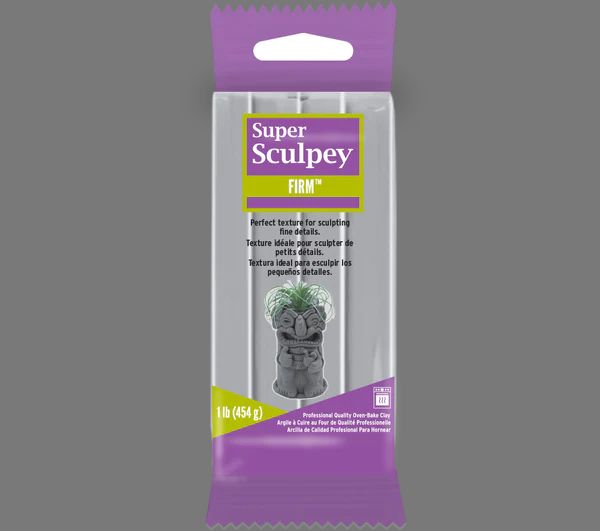What Can I Use As A Base For Clay Sculpture?
Clay sculpture is a popular art form that allows artists to create three-dimensional works of art using clay. When creating a clay sculpture, having a proper base to mount the clay on is crucial for providing stability and support. There are many different materials that can be used as a base for clay sculptures, each with their own advantages and disadvantages.
The most common materials used for clay sculpture bases include wood, foam, metal, cork, plastic, found objects, clay, and paper. The base chosen will depend on factors such as the size and weight of the sculpture, whether the piece will be moved around or remain stationary, the sculpting methods being used, and personal preference. This article provides an overview of the properties of each material to help choose the right base for your clay sculpture.
Wood
Wood is a very common material used as a base for clay sculptures. Some types of wood that work well include:
- Plywood – Plywood consists of thin sheets of wood glued and pressed together. It’s inexpensive, easy to cut, and has a smooth surface for sculpting. The layered construction makes it less prone to warping.
- MDF – Medium density fiberboard is made from wood fibers bonded with wax and resin. It’s dense, smooth, and inexpensive. MDF holds detail well but can be heavy.
- Basswood – Basswood is a lightweight hardwood that carves easily. It’s a popular choice for detailed sculpting and relief work.
- Wood blanks – Preformed wood shapes, cubes, spheres, etc. offer a ready-made base to sculpt on.
The benefits of a wood base include:
- Widely available and low in cost
- Easy to cut, shape, and sand
- Provides rigid support for clay
- Smooth surface for sculpting fine details
Potential drawbacks of wood include:
- Can be prone to warping and cracking as the wood dries and ages
- Not as durable as other materials
- Heavier than some other options
- May require sealing or priming before applying clay
Foam
Foam is a common material used as a base for clay sculpture. Some types of foam that work well include florist foam, styrofoam, upholstery foam, and foam boards. Foam provides a lightweight yet sturdy interior that clay can be built around. It is an excellent choice for large sculptures since foam is relatively inexpensive and easy to carve. Here are some pros and cons of using foam as a base:

Pros:
- Lightweight – Foam makes the sculpture weigh less compared to a solid clay sculpture.
- Easy to cut and shape – Hot wires, serrated knives, and rasps can be used to sculpt foam.
- Provides structure and support – The foam interior helps reinforce tall or elongated sculptures.
- Cost effective – Foam is an affordable material for building bases.
Cons:
- Vulnerable to moisture – Foam can degrade when exposed to too much water.
- Weak bonding – Some clays do not adhere well to foam.
- Difficult to smooth surface – The foam texture may show through the clay.
Overall, foam can be an excellent choice as long as moisture contact is limited. Using the right clay and bonding agent allows foam and clay to work together effectively.
Metal
Metal can be a useful base material for clay sculpture. Some common types of metal used include armature wire, chicken wire, aluminum foil, and sheet metal.
Armature wire is very thin, flexible wire that can be shaped into an armature or skeleton for the sculpture. It is sturdy enough to support the clay but can still be bent into different poses. Chicken wire consists of a grid of thin metal wires that can be molded into shapes. It provides more structure and support compared to armature wire. Aluminum foil can be molded, folded, and shaped to create smooth or textured surfaces for the clay. Sheet metal comes in various gauges and can be cut and bent to form bases or support structures.
Metal has several advantages as a base. It is very strong and durable, so it can support substantial amounts of clay without collapsing or sagging. The rigidity of metal helps maintain the structure and proportions of the sculpture. Metal also has longevity and will not degrade or decompose over time like some other materials.
Some disadvantages are that metal can be difficult to cut and shape without proper tools. It can be heavy, making large sculptures challenging to move around. Unprotected metal may rust or corrode over time with moisture exposure. And some metals like aluminum foil may interact chemically with certain clays or glazes.
Cork
Cork is a popular material used as a base for clay sculptures. Some of the pros of using cork include:
- Cork is lightweight and easy to cut into any shape or size needed (https://www.greenstuffworld.com/en/painting-cork-handles/16-sculpting-armature-corks.html).
- It provides a good grip for holding clay sculptures while working on them.
- Cork does not interact with polymer clay, so it’s safe to bake polymer clay sculptures on a cork base (https://www.reddit.com/r/polymerclay/comments/10ypkcj/is_a_cork_base_covered_in_sculpey_ok_to_bake/).
Some potential cons of using cork include:
- Cork can be more expensive than other base materials like wood or foam.
- It may not provide as much support as a sturdier material like wood.
- Cork can be prone to chipping or crumbling over time.
Overall, cork can be an excellent choice for a lightweight, easy to work with base for polymer clay sculptures. Its grip and non-reactivity make it a popular option. Just be aware of potential drawbacks like cost and durability when selecting a base material.
Plastic
Plastic is a common material used as a base for clay sculptures. Some popular types of plastic used are:
- PVC – PVC plastic is lightweight, durable, and inexpensive. It can be easily cut to size and holds detail well. However, PVC can warp with exposure to heat.
- Acrylic – Acrylic sheets are strong, rigid, and scratch resistant. Acrylic is easy to cut but more expensive than other plastics. It withstands heat better than PVC.
- Polypropylene – Polypropylene plastic is flexible and resilient. It bends without breaking but is difficult to glue other materials to.
Some pros of using plastic bases for clay sculpts are: plastic is smooth and provides a good surface for sculpting detail, it’s rigid enough to support the weight of clay, and it resists shrinking or cracking. Plastics are also reusable for multiple projects.
Some cons are that exposure to too much heat can cause some plastics to warp. Plastic is also more expensive and difficult to find than some other base materials. Proper adhesive is required to get the clay to stick to the plastic.
Overall, plastic can serve as an excellent sturdy and reusable foundation for clay sculpture. Just ensure that the type of plastic and adhesive is compatible with the clay being used.
Found Objects
Found objects refer to natural or manmade objects that are discovered or repurposed to create artwork. They can make excellent bases for clay sculptures. Common found objects used in sculpting include:
- Seashells
- Stones
- Bottle caps
- Old toys
- Keys
- Silverware
Some pros of using found objects as a base for clay sculptures include:
- Adds unique texture and visual interest
- Incorporates meaning through everyday objects
- Repurposes waste materials
- Low cost option
Some cons to consider include:
- Irregular shapes can be challenging to work with
- Items may deteriorate over time
- Weight of objects must be considered
- Cleaning or preparing objects takes time
Overall, repurposed found objects can make creative, one-of-a-kind bases to showcase the clay sculpture material itself. Their diverse shapes and textures provide visual impact and personalized meaning.
Clay
One option for a sculpture base is to use clay itself. You can create clay slabs or balls to use as the foundation for your sculpture. Using the same clay provides consistency in texture and color. Some pros of clay bases:
- No need to buy additional materials – you already have clay on hand
- Seamless look since the base matches the sculpture clay
- Can blend sculpture and base together
- Lightweight compared to materials like wood or metal
Some potential cons of clay bases:
- Less structural integrity than materials like wood
- Need an armature for support with taller sculptures
- Clay-on-clay connections can come apart easier than clay bonded to other materials
- No way to hide any imperfections in the base clay surface
Overall, clay can be a good readily available choice for sculpture bases. Just be mindful of height limitations and connections coming apart when using an all clay foundation.
Paper
Paper is a popular option for bases when sculpting with clay. Some common types of paper used include cardboard, chipboard, and heavy cardstock paper. Cardboard and chipboard provide sturdiness to support the weight of the clay, while cardstock can work for smaller and lighter sculptures.
Paper bases are very lightweight compared to wood or other materials. This makes the sculpture easier to transport and display. Paper and cardboard are also easily cut to any shape needed. Many art and craft stores sell cardboard sheets and tubes precut for common sculpture sizes.
A downside to paper is that it can bend or warp over time when exposed to moisture from the clay. Properly preparing the paper first with gesso or acrylic medium can help prevent warping. The surface also needs to be built up with additional layers of paper or other materials if a completely smooth surface is desired.[1]
In summary, paper bases provide a lightweight, affordable, and versatile option for clay sculpture. With proper preparation, paper can make a suitable base for many clay sculpture projects.
Conclusion
When choosing a base for your clay sculpture, consider the type of clay you are using and the size and weight of the finished piece. Here’s a summary of some of the best bases for different sculpture needs:
For small, lightweight sculptures that need rigidity, wood or metal bases work well. Wood like basswood is lightweight while metals like aluminum or steel provide more strength.
For medium to large sculptures, foam is an excellent choice. It’s lightweight, easy to cut and shape, and provides cushioning for fragile clay. Urethane foam sheets or upholstery foam blocks are commonly used.
For heavy sculptures, clay itself can make a supportive base. Roll out and attach thick coils of clay to build up a base before adding finer detailed clay on top.
Found objects like wood blocks, plastic toys, or metal scraps can make unique custom bases for abstract sculptures.
Consider the purpose of your sculpture too. Adjustable multi-part plaster bandage bases allow for hollow sculptures. Metal bases like armatures allow for posable figures. Cork sheeting helps make soft clay tiles for mosaics.
With the right base, you can create professional, long-lasting clay sculptures in any size and style your creativity imagines!




